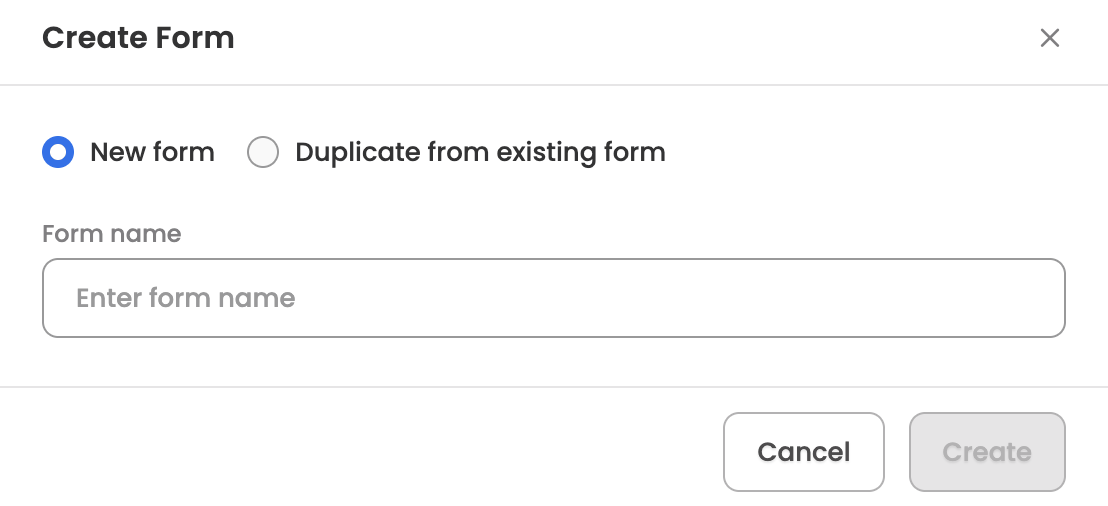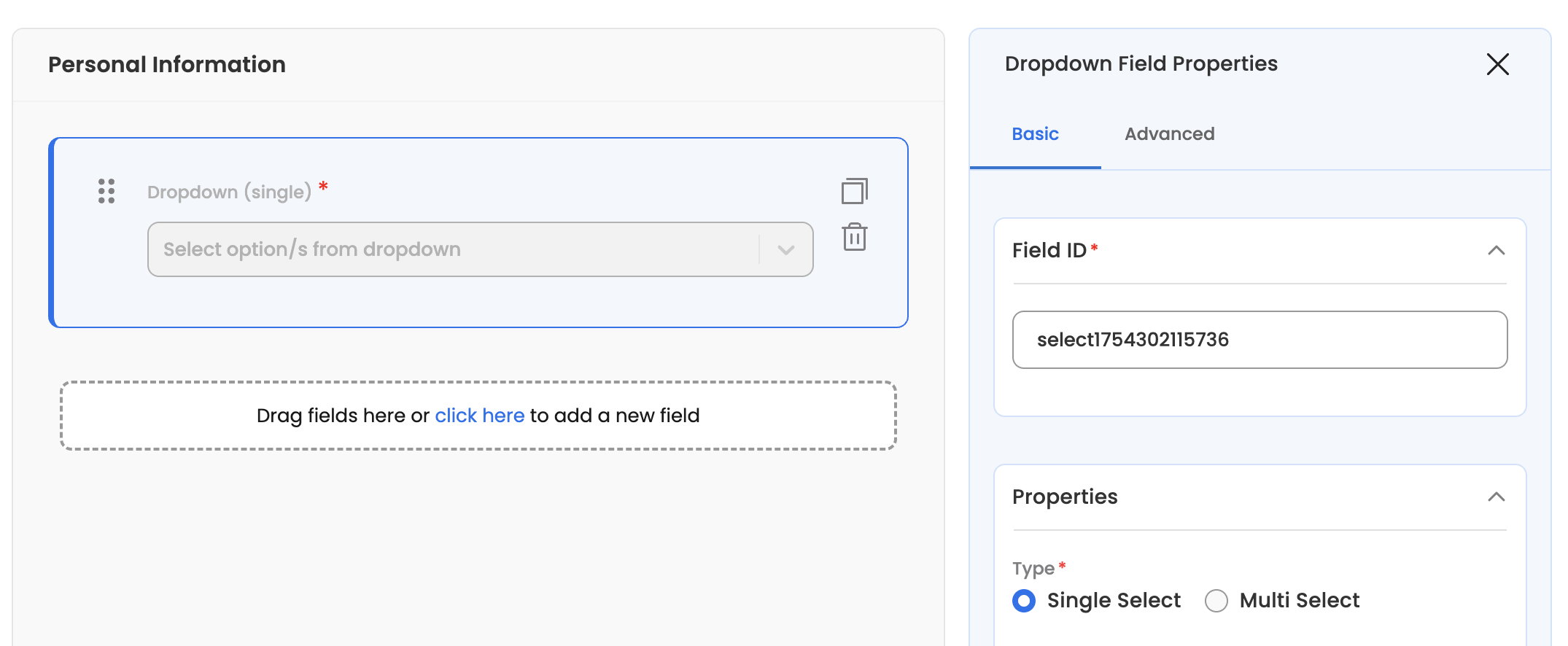Forms
Introduction
Forms allow you to capture relevant employee information, such as personal or bank details, along with necessary documents.
Form creation
Here’s how to add a new form:
-
Go to the forms within the onboarding settings.

-
Click “Create Custom Form” to build a new form, or use an existing template to create one quickly.

-
Enter a name for the new form. You can also choose to duplicate an existing form if needed.

-
You’ll now be taken to the form builder screen, where you can drag or click to add two types of components to your form:
-
Form components: Add static content to your form to provide additional information, such as headers, descriptions, or hyperlinks.
-
Field components: Add fields you want to include in the form—these can be auto-filled or manually completed by the user.

-
-
After adding a field, you can define its properties. Some fields may have specific properties, but here are some common ones available for all fields:
- Field ID (Basic): Unique identifier for the field.
- Label (Basic): Display name of the field.
- Placeholder (Basic): Placeholder text displayed in the empty input field.
- Helptext (Basic): Additional information to guide the user, displayed below the input field.
- Default Value (Advanced): Default value of the field displayed before user input.
- Visibility (Advanced): Define the field’s visibility based on other fields or their values.
- Editable (Advanced): Allow candidate to modify the field.
- Mandatory (Advanced): Mark field as required for submission.
-
Once you’re done, save the form and proceed to the settings section.
Form settings
Here are the various settings you can adjust within the form settings.

Managing existing forms
The configured actions will be visible in the forms settings, here are the actions which can be performed for each configured form:

- Edit: Modify the configured form.
- Duplicate: Duplicate the form by specifying a name for the new form.
- Delete: Permanently delete the action.
Updated about 17 hours ago
